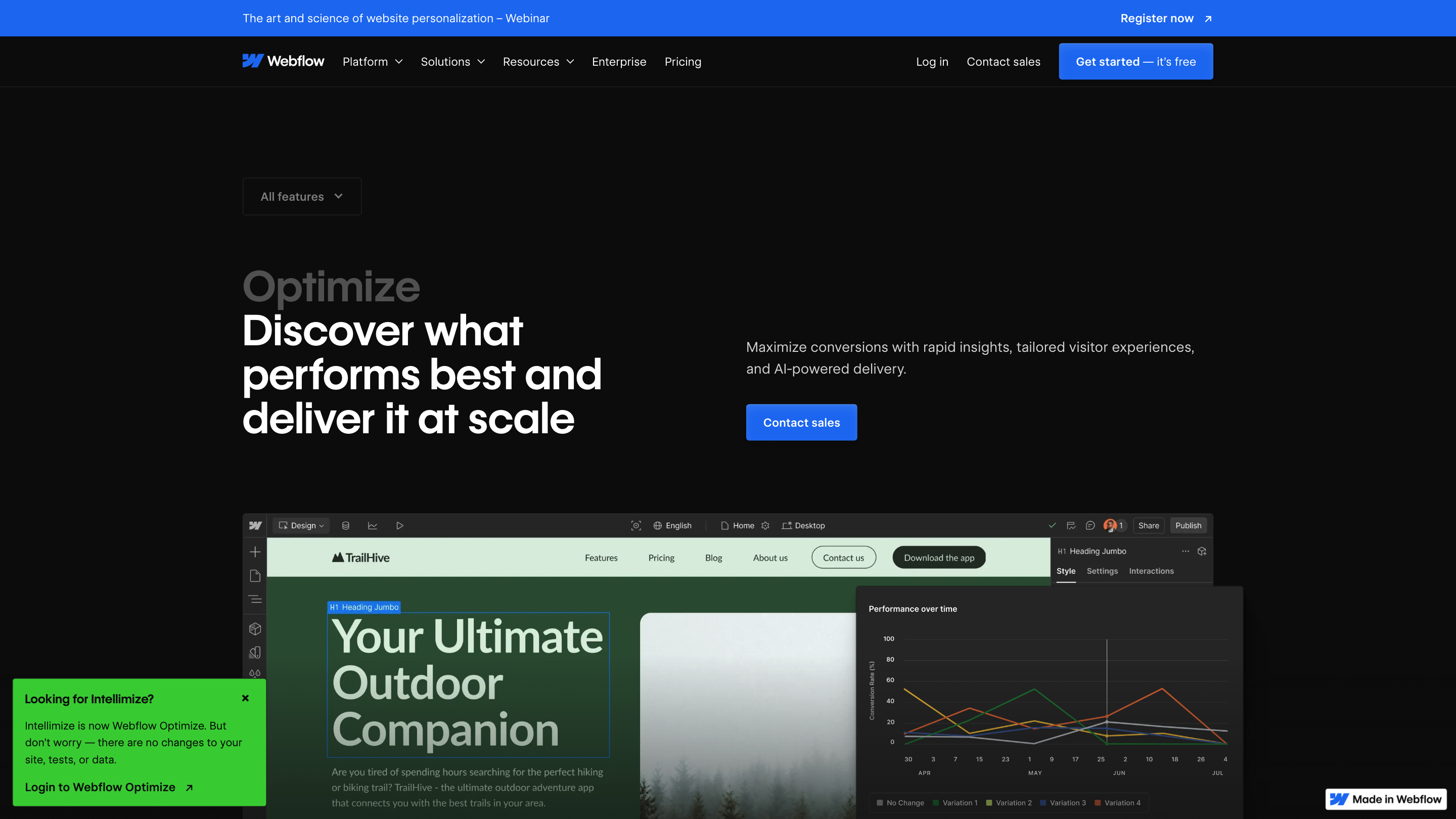Intellimize
Open siteIntroduction
Intellimize uses AI to personalize websites and optimize conversion rates for marketers.
Intellimize Product Information
Webflow Optimize (Webflow Optimize) is a website optimization and personalization tool built into the Webflow platform. It enables you to tailor page experiences for visitors by running experiments (A/B tests) and delivering AI-powered, personalized content based on visitor attributes. It emphasizes privacy-friendly segmentation, fast experiments, and seamless integration with Webflow’s design, CMS, hosting, and enterprise features.
How to Use Webflow Optimize
- Set up Optimize on your Webflow project. Enable the Optimize product within your Webflow account (free trial and paid plans available).
- Define engagement goals and experiments. Create A/B tests or multivariate tests to compare variations of page elements (headlines, images, CTAs, layouts, etc.).
- Configure personalization rules. Use visitor attributes (device, geography, new vs returning, origin, UTM parameters) to show tailored content.
- Monitor results. Review performance metrics and audience insights directly in Webflow to determine winning variations.
- Deploy winning experiences. Deliver optimized pages and personalized experiences to visitors in real time.
Note: Optimize emphasizes privacy by using anonymous visitor IDs stored in local browser storage and avoiding personally identifiable information by default. Consider CMP integrations if you need optical opt-out or additional consent controls.
Key Capabilities
- A/B Testing and Multivariate Testing for page elements and layouts
- Personalization at the visitor level based on attributes such as device, geography, new/returning, sources, and more
- AI-assisted optimization to accelerate insight and delivery of winning variations
- Native integration with Webflow’s Design, CMS, Hosting, Localization, and Security features
- Audience insights and performance analytics to inform decision making
- ABM-ready features for targeted account experiences (enterprise)
- Integrations with marketing and analytics tools (HubSpot, CRMs, etc.) via Webflow ecosystem
How It Works
- Webflow Optimize collects anonymized attribute data in-browser (local storage) to determine which variation to show. It does not store PII by default. A visitor is identified by an anonymous ID to ensure consistent experiences across pages.
- You create experiments and variations; Optimize serves variations in real time and reports performance to help you identify winning variants.
- Personalization uses visitor attributes to tailor content, headlines, visuals, and CTAs to improve engagement and conversions.
Safety and Privacy Considerations
- Optimize uses anonymous identifiers and does not tie data to identifiable individuals by default.
- No cookies are used for visitor identification; data is stored in the browser’s local storage.
- If you integrate third-party tools, ensure you review potential PII exposure and privacy compliance.
Core Features
- A/B testing and multivariate testing of pages and elements
- Personalization based on visitor attributes (device, location, new/returning, source, etc.)
- AI-powered optimization for faster results and smarter insights
- Native integration with Webflow design, CMS, hosting, and analytics
- Audience insights and performance tracking directly in Webflow
- ABM-ready capabilities for enterprise-scale personalization
- No cookies for identification; uses anonymous local storage for visitor data
- Flexible plans with scalable experimentation for teams and enterprises
